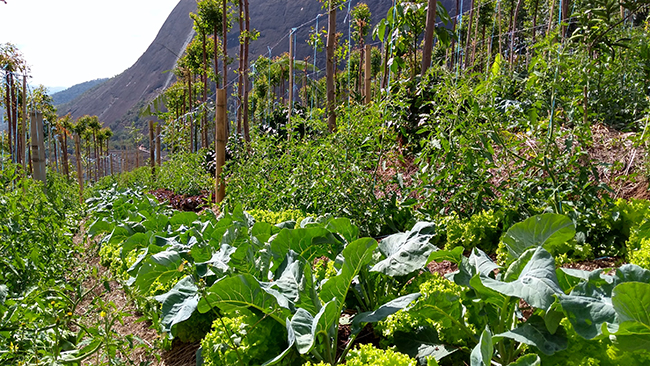IPCC report says that climate change increases pressure on land, meanwhile land use causes almost a quarter of global greenhouse gas emissions.
On 8 August the Intergovernmental Panel on Climate Change (IPCC) published a special report on Climate Change and Land. The report is summarised by three basic statements:
- Land is under growing human pressure
- Land is a part of the solution
- But land can’t do it all
“Agriculture, forestry and other types of land use account for 23% of human greenhouse gas emissions. At the same time natural land processes absorb carbon dioxide equivalent to almost a third of carbon dioxide emissions from fossil fuels and industry,” said Jim Skea, Co-Chair of IPCC Working Group III. When emissions from pre- and post-production are included, the global food system alone is estimated to cause 21–37 per cent of global emissions.
To say that land is important for human livelihoods is an understatement. Between a quarter and one third of all ice-free land is used for primary production of food, feed, fibre, timber and energy. And more than 70 per cent of the global, ice-free land surface is directly affected by human activities that include infrastructure (1%), cropland (12%), pastures (37%), plantations and managed forests (22%).
Climate change aggravates the situation. Surface-temperatures over land have increased by almost double (1.53°C) the global average temperature rise (0.87°C). There has been an increase in weather events such as heatwaves, droughts and heavy rainfall. In some regions, including Sub-Saharan Africa, parts of East and Central Asia, and Australia there has been an increase in desertification. Droughts, heavy rainfall, permafrost thaw and sea level rise also exacerbate land degradation. Climate change is already affecting food security in drylands, particularly those in Africa, and high mountain regions of Asia and South America.
“The choices we make about sustainable land management can help reduce and in some cases reverse these adverse impacts,” said Kiyoto Tanabe, Co-Chair of the Task Force on National Greenhouse Gas Inventories.
When exploring possible futures, the IPCC use different Shared Socioeconomic Pathways (SSPs) in which population growth, consumption levels, equality, technological advancement and global trade regimes vary.
In all projected greenhouse gas scenarios, impact on land is expected to increase, though there will be a lot of variation between regions. Not only will the different SSPs will result in different levels of greenhouse gas emissions, but the capacity to adapt to a changing climate will also vary. When comparing the pathway named SSP1 – “a world with low population growth, high income and reduced inequalities, food produced in low GHG emission systems, effective land use regulation and high adaptive capacity” – with pathway SSP3, which represents the opposite trends, the impact on desertification, land degradation and food security will remain less under SSP1, even at higher temperatures (figure). In short, pathways that reduce demand for food, feed and water in combination with improvements in technology will result in less water scarcity, land degradation and food insecurity.
Many of the possible land-related actions that contribute to mitigation and adaptation have multiple benefits in other areas, such as combating desertification and land degradation, and enhancing food security. Actions the IPCC have identified to deliver across all these areas include: sustainable food production, improved and sustainable forest management, soil organic carbon management, ecosystem conservation and land restoration, reduced deforestation and degradation, and reduced food loss and waste. The benefits of sustainable food choices are also highlighted in the report. “Balanced diets featuring plant-based foods, such as coarse grains, legumes, fruits and vegetables, and animal-sourced food produced sustainably in low greenhouse gas emission systems, present major opportunities for adaptation to and limiting climate change,” said Debra Roberts, Co-Chair of IPCC Working Group II.
The IPCC distinguish between actions that do not increase or even decrease competition for land and actions that will intensify land demand. The latter group include afforestation, reforestation and the use of land to provide feedstock for bioenergy. If these types of land-dependent actions are carried out on a wide scale there is a risk for increased desertification and land degradation as well as a threat to food security.
On the other hand, if actions are taken that reduce demand on land at an early stage, such as increased productivity, improved land management, dietary changes and reduced food waste, there will be more space – literally, to grow bio-energy crops without risking food security.
“Policies that support sustainable land management, ensure the supply of food for vulnerable populations, and keep carbon in the ground while reducing greenhouse gas emissions are important,” said Eduardo Calvo, Co-Chair of the Task Force on National Greenhouse Gas Inventories.
Finally, the report stresses the importance of acting now instead of later across all sectors, not only land: “Delaying climate mitigation and adaptation responses across sectors would lead to increasingly negative impacts on land and reduce the prospect of sustainable development”.
The publication of the report is timely, as it arrives just before the Conference of the Parties of the UN Convention to Combat Desertification (COP14) in New Delhi, India, in September, and the UN Framework Convention on Climate Change Conference (COP25) in Santiago, Chile, in December.
Kajsa Pira
IPCC Press release 8 August 2019 https://www.ipcc.ch/2019/08/08/land-is-a-critical-resource_srccl/
IPCC Special Report on Climate Change and Land https://www.ipcc.ch/report/srccl/
 Figure. Different socioeconomic pathways affect levels of climate-related risks.
Figure. Different socioeconomic pathways affect levels of climate-related risks.





























